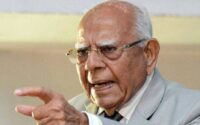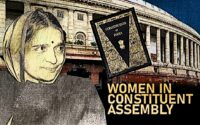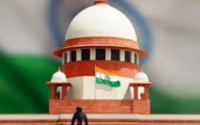Extra Judicial Killings- A Threat to Democracy?
This article is written by Mansi Vyas from UFYLC, UOR, Jaipur and curated by Rajrishi Ramaswamy from Symbiosis Law School, Hyderabad.
“To cheapen the lives of any group of men, cheapens the lives of all men, even our own. This is a law of human psychology or human nature and it will not be repealed by our wishes nor will it be merciful to our blindness.” said William Pickens
6th December 2019; the day when all news channels, tweets, WhatsApp statuses and Instagram stories were filled with applause for Telangana police. It was the day when Indian police were the heroes and the 4 accused men were the villains of a movie which ended up being real.
Even more recently, in 2020, news channels were full of encounter-related news and social media was filled with memes of the encounter of Gangster Vikas Dubey who along with his 5 other men was gunned down by UP police on July 10 and July 3-9 respectively.
Indians got too carried away with cinematic feeling the incidents gave. Life is not a movie. The encounters were not only constitutionally wrong but also morally incorrect. This is one of those incidents when asleep citizens wake up for a quick wave of feminism or human rights and go back to their hibernation. It would not have been a problem if it were as simple as it looks, but the thing is, they perceive the wrong idea of what’s wrong and what’s right. They have this sudden rush of heroism through which they tend to forget who the real villains are. With the same rush, police find it heroic to murder merely accused people. Here are a few another encounters:
- Sadiq Jamla was killed in 2003in a fake encounter because he was suspected to assassinate Shri Narendra Modi and other BJP leaders. For the same reason Ishrat Jahan and three others were killed in 2004.
- In 2008, when Delhi police was only asked to gather information about 2008 September blasts, two suspected terrorists were killed along with an inspector.
- In 2016 eight people associated with the Student’sIslamic Movement of India were shot dead by Madhya Pradesh police. The deceased, according to police, started firing at police when asked to surrender and in response they were shot dead.
The reason behind these encounters was either selfish interest of police/ political motive or heroic wave. Additionally, India’s conviction rate is 70% i.e. only 30% of the total accused are found guilty. This further decreases the probability of a just encounter.
Even if the accused is found guilty, Article 21 states that “No person shall be deprived of his life or personal liberty except according to procedure established by law.” The term “person” cannot exclude accused persons owing to the availability of equality before law under Article 14. And the phrase “ procedure established by law” clearly prohibits extra-judicial killings.
Furthermore, NHRC and the Supreme Court have already laid down guidelines for preventing unjust encounters. The guidelines if followed properly, could stop unlawful killings but the main lacunae in the guidelines is investigating authorities. It is the police itself which investigates to find the justification for such encounters.
The leaders play a vital role in shaping public opinion about things. Yogi Adityanath in a 2017 interview spoke of his “thok do” policy for police encounters. In this policy he not only supports encounters but also promotes them. As a result, there have been 5,128 encounters since 2017 and out of which 103 were killed. This was further highlighted by him as a great achievement of his government. This is the exact opposite of what a democracy should look like. In a country like ours, where the Rule of Law prevails, growing encounter culture is burying it. There actually is no big difference now between heroic encounters and mob lynching. Moreover, in Prakash Kadam vs Ramprasad Vishwanath Gupta (2011) it was said that fake encounters are nothing less than cold-blooded murders and the ones who commit it should also be treated like murderers.
Way forward:
- The accused should be put under proper custody.
- Special security measures should be taken to avoid accused from performing actions where encountering is the only option left.
- Proper trainingshould be provided to police for handling “encounter-needing” situations.
- Most of the police officers go away with such murders in the name of “private defense”. The boundaries of this defense are often widened for police. Therefore, Criminal laws primarily IPC and CrPC should add provisions specifically referring to encounters.
- Investigating authorities should not be the police itself.
- Leaders should be trained to keep their personal opinions to themselves rather than trying to portrait them to be the right
- Public should be made aware of the importance of the rightto life. People should be taught that “killing” is never the answer.
- Government should see to the frustratingly slow justice system.
Conclusion:
Democracy is a great concept in theory but is quite alike when it comes to practical. More than 43 lakh cases are pending in High Courts alone and 8 lakhs of which are over a decade old. With such disturbing statistics, anyone could get frustrated and start demanding speedy justice. When police have uneven power to make it happen, they don’t hesitate. In their way of fast justice, police should remember that it is to be complemented by justice. As Noam Chomsky said “people with power understand exactly one thing: violence”. The extra power in the hands of police should be taken away. It is saddening how opportunists find a way to mock such situations. Murder is not funny. People need to understand that all lives matter and nobody deserves to die. The whole judicial process exists for a reason. If people could decide what has to be done, why did we ever come up with such a lengthy process? Also, leaders need to limit their speeches for good. Laws need to be updated; this is a problem big enough to be dealt with separately in our law books.


